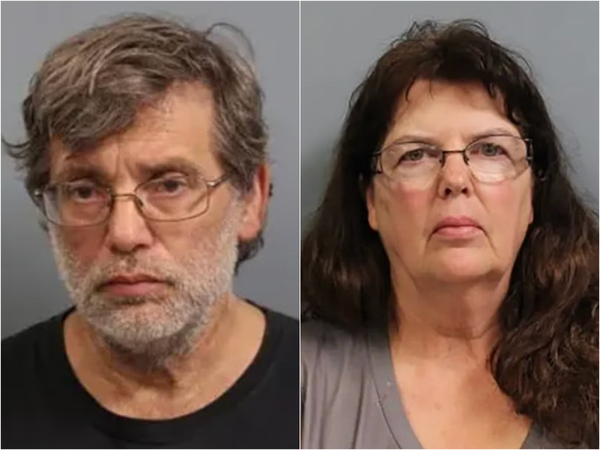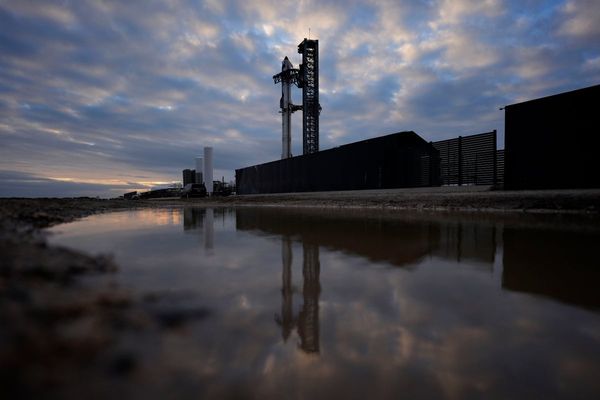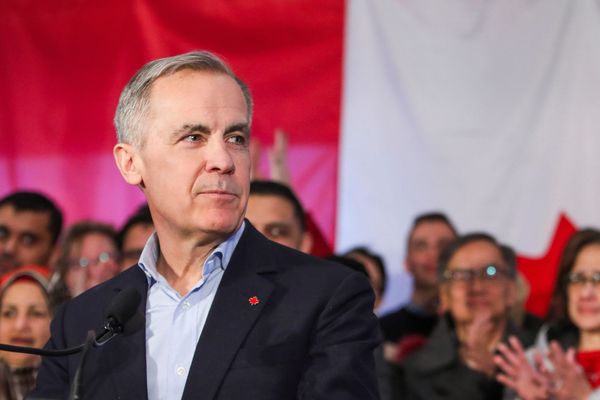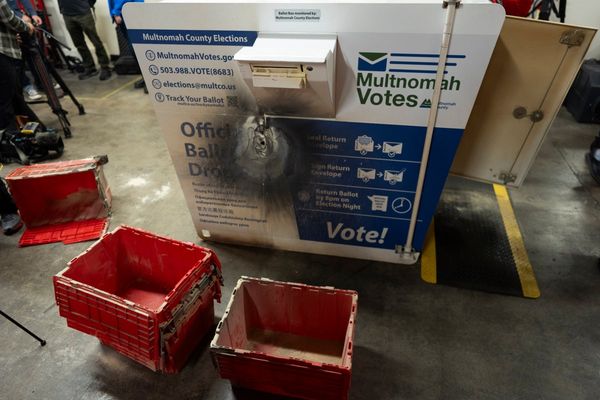
The Far Eastern Russian city of Khabarovsk, located just 19 miles from the Chinese border, was not incorporated into the Russian Empire until the mid-19th century. Imperial Russia’s control over its easternmost regions was always shaky: It’s hard to keep tabs on a place that lies thousands of miles away from the capital, across ancient forests and frozen rivers. Today, eastern Russia is poor and sparsely populated, a booming China is eager to exploit Russian lumber and other resources in the area, and the locals are restive, as evidenced by a series of major protests in Khabarovsk and neighboring cities over the past month.
Throughout Russia’s years under President Vladimir Putin, hot spots of resentment and anger have flared up now and then across the country. Protests in the provinces have tended to center on economic questions such as pensions, tariffs, and tolls, while more glamorous pro-democracy protests—the ones most likely to attract international attention—have been concentrated in Moscow. But bread-and-butter issues may have greater potential to unify a sprawling country, and more than one empire has fallen thanks to unrest in its hinterlands.
The Khabarovsk demonstrations began after the July 9 arrest of the region’s governor, Sergei Furgal, who is accused of ordering four murders in 2004 and 2005. The people of Khabarovsk were furious at the arrest, which they viewed, quite reasonably, as a Kremlin plot against democracy. Pro-Furgal memes circulated online, a petition garnered more than 30,000 signatures, and in a city of just 600,000 people, tens of thousands came out to protest. There have been daily rallies, with major demonstrations every Saturday. Chants have included slogans such as “Our vote, our Furgal” and “Putin, resign.”
Furgal didn’t set out to become an opposition hero. Before going into politics in 2005, he ran businesses that managed lumber and scrap metal, two hypercompetitive industries in the Far East that are often connected to organized crime. (Local voters are willing to excuse a checkered past.) He was elected in 2018 in a surprise victory over the United Russia incumbent, Vyacheslav Shport. Then a long-serving member of the State Duma, Furgal didn’t even bother to think up a campaign slogan for his gubernatorial run. His billboards showed only his face and name, without even stating which position he was running for. But United Russia, Putin’s party, had so angered voters with its attempts to raise the retirement age that many voted for Furgal simply because he was the candidate of the Liberal Democratic Party, which opposed the change. Furgal virtually tied with Shport in the first round. Despite reported pressure from the Kremlin to drop out, Furgal remained in the race—though he did leave town during the runoff to avoid unduly influencing the results. He won 70 percent of votes in that second round. The Kremlin punished him by changing the Far Eastern Federal District’s capital from Khabarovsk to Vladivostok, and by opening an investigation against a former governor who had supported Furgal’s campaign.
This retaliation made Furgal a “symbol of popular resistance,” according to Meduza’s Andrey Pertsev. Furgal experimented with a new identity, joining protesters and criticizing United Russia officials. The Liberal Democratic Party swept the 2019 Khabarovsk elections, though Furgal again declined to campaign. Putin’s ratings in Khabarovsk fell, provoking further federal wrath. The authorities raided a firm linked to Furgal and arrested his ex-business partner on murder charges; the ex-partner then testified against him on murder charges from his scrap-metal career. Furgal’s days of freedom were numbered.
Wild though the Khabarovsk scrap-metal scene may have been, it seems that the charges against Furgal are bogus. An investigation by the independent paper Novaya Gazeta suggested that two of the murders of which Furgal is accused were not his doing, but were the result of a mafia conflict involving a man called “the Crab” and a food-cart business. A third charge doesn’t hold up to scrutiny, and the fourth murder, which was committed by Furgal’s driver, occurred spontaneously after a spat over a scrap-metal delivery.
So far, federal authorities have responded to the Khabarovsk protests with a mixture of soothing promises and mild punishment. Given the harsh treatment of protesters in Moscow—for instance, widespread arbitrary arrests during last summer’s protests over unfair city elections—the relatively gentle treatment of Khabarovsk marchers suggests that Moscow may find it harder or less desirable to bully citizens in far-flung places. Mikhail Degtiarev, the Liberal Democratic Party member of the State Duma who was appointed acting governor on July 20, told residents that Prime Minister Mikhail Mishustin had pledged 1.3 trillion rubles ($17.9 million) in funding for Khabarovsk. (Degtiarev has never lived in Khabarovsk and keeps leaving town during the weekend protests, to the disgust of the demonstrators.) Degtiarev also promised to create a “People’s Council” that could communicate popular demands to the governor.
Degtiarev posted on Instagram about armed and dangerous protesters and has made suggestions about foreign incitement, but he has avoided decisive action against the movement. So far, two protesters have been arrested and sentenced to weeklong jail terms for organizing unsanctioned rallies, two have been fined, and a few more have been detained before protests or attacked by unidentified men. But for the most part, the Khabarovsk police have let the marches continue unhindered. The most recent Saturday march, on Aug. 1, was the smallest so far, perhaps because of heavy rain that day. But “small” is relative: There were about 10,000 people marching.
The highest-profile protests of the Putin era thus far have been the demonstrations from 2011 to 2013 against election fraud, which centered in Moscow and included famous writers and many members of Moscow’s cosmopolitan, well-educated creative class. In response to this movement, which threatened to become a Russian version of a Ukrainian-style “color revolution,” Putin and his administration attempted to pit the Moscow and St. Petersburg creative class against the supposed silent majority of the Russian provinces. The Pussy Riot show trial, for example, was part of an effort to portray Moscow protesters as blasphemous European-style hipsters who spat on the faith of ordinary Orthodox Russians. It was easy to stimulate resentment against Moscow privilege: After all, the government had been concentrating power and wealth there since the 1990s, making the city into a top-tier glittering international capital even as the provinces languished.
But the provinces haven’t been as silent as the Russian government might like. Over the past two decades, there have been a number of significant protests outside Moscow and St. Petersburg. These have often been linked to straightforward economic grievances—in particular to falling living standards and efforts to dismantle the Soviet-style social safety net, which many Russians still consider to be a basic right. In 2005, an attempt to switch from in-kind social benefits to cash payments prompted protests in a dozen Russian cities. Demonstrators blocked highways and railways and took over government buildings. In 2008, the riot police broke up a demonstration in Vladivostok against new tariffs on imported cars; from 2009 to 2010, Kaliningrad residents demonstrated against new vehicle tariffs, and eventually against their United Russia governor and Putin. Beginning in 2015, truckers organized a strike against a new toll road system, and from 2017 to 2018 there were anti-corruption protests across the country, led by anti-corruption activist and opposition leader Alexei Navalny. Anger against the 2018 proposal to raise the retirement age was not limited to Khabarovsk; it provoked protests in most of Russia’s major cities, and contributed to several significant losses for United Russia in the 2018 elections.
As climate change accelerates, environmental questions are moving to the forefront of provincial protests. More and more Russians are demonstrating against deforestation, pollution, and government failure to prevent or control disasters such as the wildfires that now choke Siberia every summer. Last year, protesters in Krasnoyarsk demanded their governor’s resignation, furious at his statement that it didn’t make economic sense to fight the wildfires that filled the region’s air with smoke.
The Shiyes landfill protests from 2018 to 2020, in the Arkhangelsk region and the Komi Republic, have had a particularly strong metaphorical charge. When hunters discovered a secret construction site in the forest, locals learned of plans to build a new dump for Moscow’s unsorted garbage, which would have released large quantities of toxic effluvia that could have entered waterways, potentially making it all the way to the Barents Sea. Activists built roadblocks to prevent construction and established a large tent city. This protest movement, which included Indigenous activists, environmentalists, and communists, had endurance: In December 2019, activists reported that a protest in Kotlas (which is, coincidentally, the birthplace of Yerofey Khabarov, the 17th-century explorer for whom Khabarovsk is named) attracted between 5,000 and 10,000 people, in a town of just 60,000. Construction halted, but activists remained on guard. In June 2020, the Arkhangelsk regional government terminated its agreement with the construction company.
Most recently, Putin caused an outcry from environmentalists when he signed a new measure, on July 31, that will open protected areas around Siberia’s Lake Baikal, the largest freshwater lake in the world and home to a unique, ancient ecosystem. Last year, locals managed to block plans to build a Chinese water bottling plant along the shores of the lake, which has long been threatened by pollution from industry, mining, and agriculture. With Russia warming about twice as fast as the rest of the world, environmental protests will most likely grow in the coming years. In a 2018 poll by the Presidential Human Rights Council, respondents said that the right most often violated by the authorities was the right to a healthy environment. (Runners-up were the rights to fair trials and elections.) As climate change continues to affect harvests, damage infrastructure (which is particularly vulnerable in areas where it was built on permafrost, which is now thawing), and contribute to natural disasters, environmental and economic concerns will converge, potentially giving rise to new protests across Siberia, the Far East, and the Arctic. The Putin administration spends much of its energy worrying about NATO and its western border, but trouble is stirring in the east and the north, too.
What would it take to turn these bursts of regional protest into a sustained national movement? Organizers will need to find problems that can unite Russians across regions and across the political spectrum. Navalny’s signature issue, the fight against corruption, has proven its enduring appeal for voters and activists of many stripes. A lack of democratic representation, falling living standards, and the erosion of the social safety net cause indignation in the metropolitan centers as well as in the provinces. Climate change still has little political currency in Russia, but concern over environmental degradation has the potential to gain national political prominence, as it did in the Soviet Union in the 1970s and 1980s. In the end, real change may be a matter of numbers: of protesters, of activists, of regions ready to take to the streets. Once the whole forest is aflame, it becomes very hard to put out the fire.







